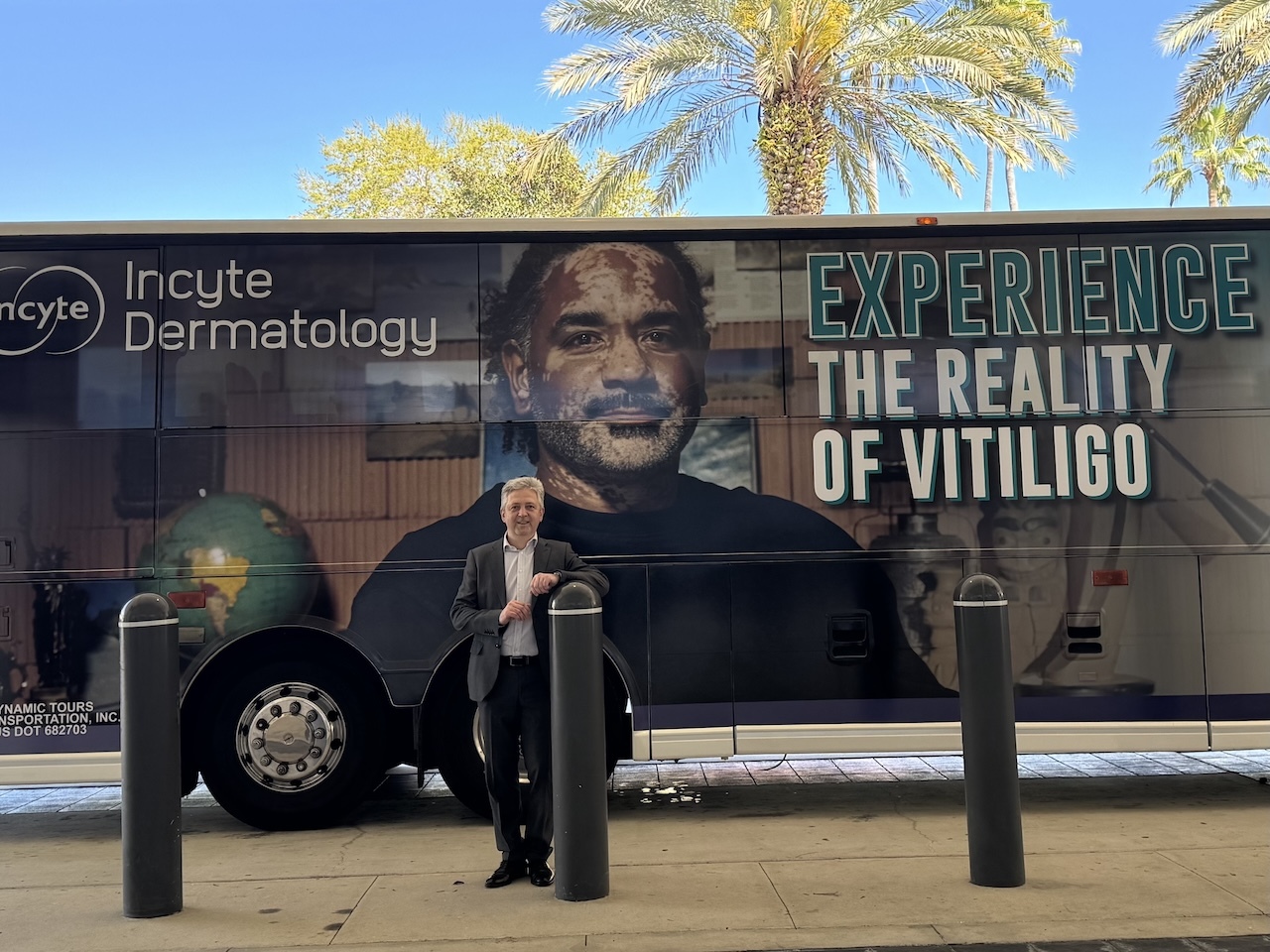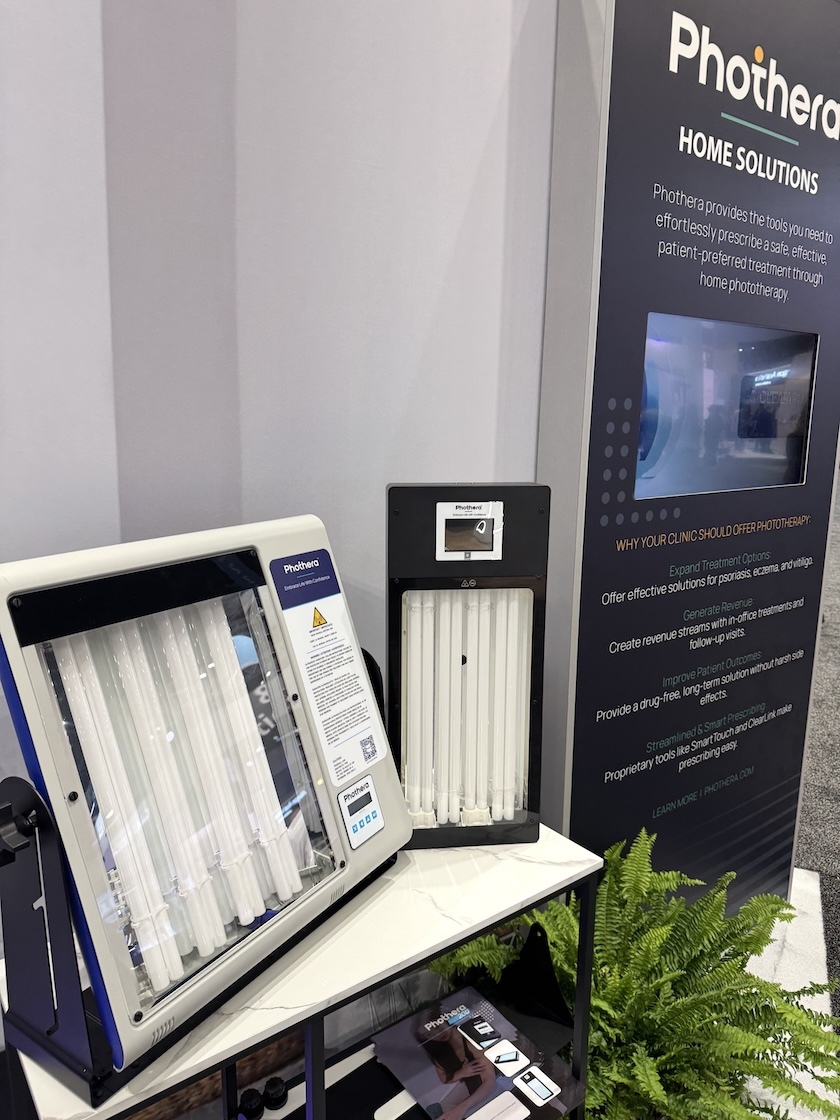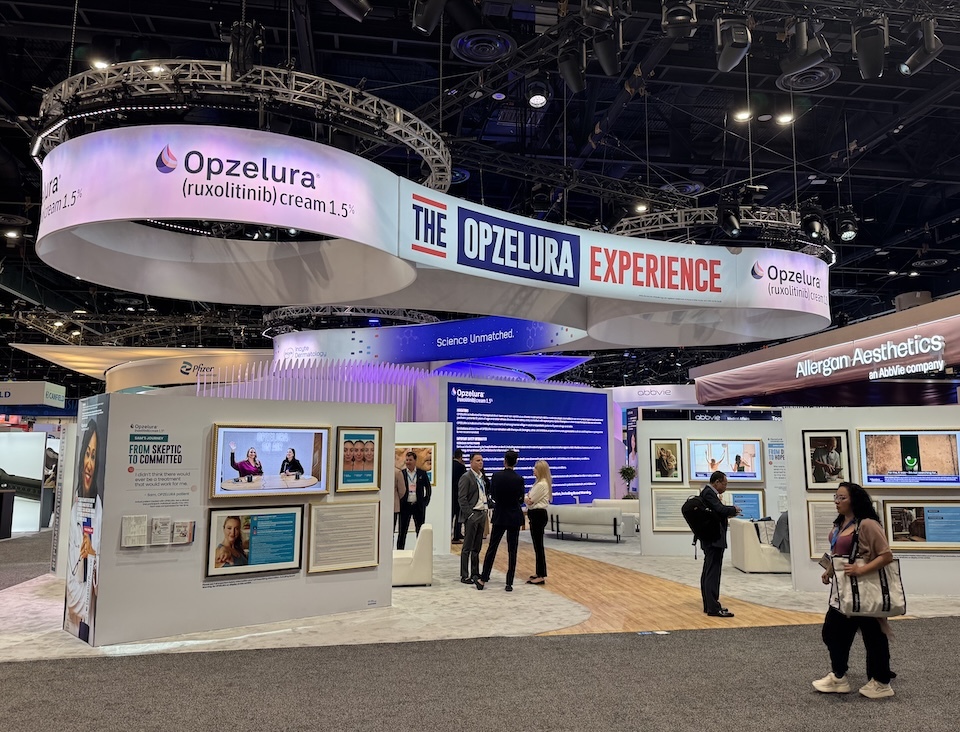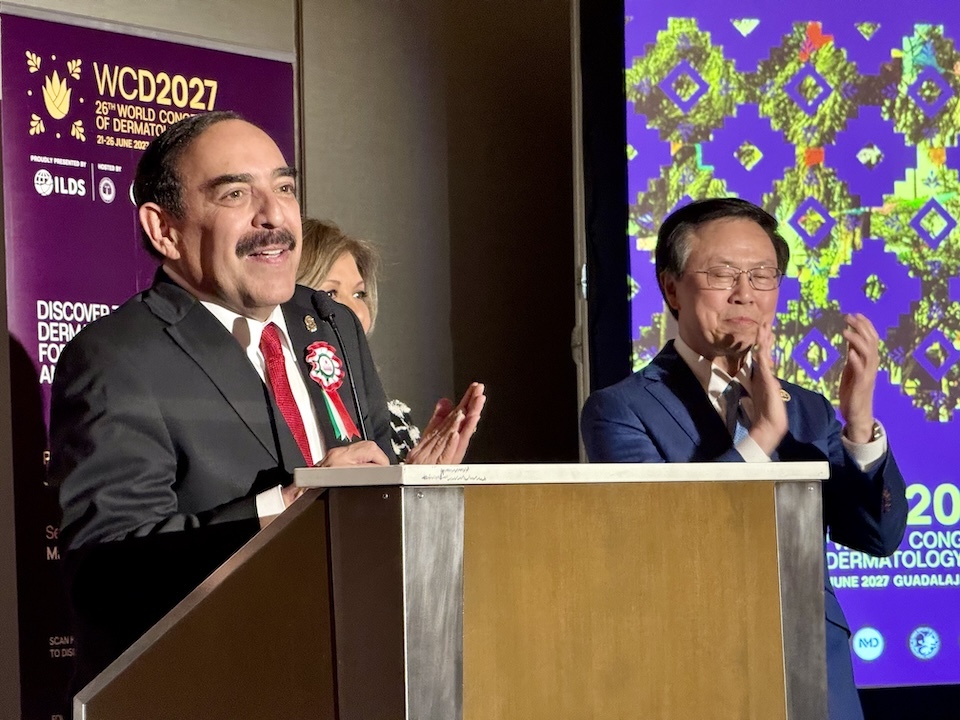New
Vitiligo in the Spotlight at AAD 2025
The 2025 American Academy of Dermatology Annual Meeting in Orlando was many things — massive (close to 20,000 attendees), intense (so many tracks, so little time), and, for anyone involved in vitiligo, surprisingly hopeful.
From AI-powered diagnostics to novel immunotherapies, it’s clear dermatology is in the midst of a transformation. And while the flashy headlines often go to injectables and anti-aging trends, vitiligo quietly (and finally) took center stage — with research that felt more like a renaissance than a routine update.
A Renaissance of Light and Science
Let’s start with phototherapy. It’s not fading away, — it’s evolving. At AAD, it became obvious that while systemic and topical medications are advancing, phototherapy remains a cornerstone of vitiligo treatment. And it’s getting smarter.
The exhibit halls showcased everything from clinic-based NB-UVB advancements to handheld at-home devices, signaling a future where photomedicine becomes not only more effective but more accessible. It’s a trajectory we at VR Foundation have long championed—precision without the prescription pad overload.
A 360-Degree Vision of Vitiligo
The most visually ambitious vitiligo-related installation? Clinuvel’s Pavilion of Photomedicine: an immersive 360° video experience that didn’t just present data, but lived stories. It invited visitors to feel what it means to live with a visible skin disorder, combining art, science, and human emotion in a way that very few pharmaceutical exhibits ever dare to.
Clinuvel’s journey with SCENESSE (afamelanotide) took center stage — an α-MSH analog originally approved for erythropoietic protoporphyria (EPP), now being studied in phase III for vitiligo, particularly in patients with Fitzpatrick skin types III–VI. While its efficacy is described as “moderate,” especially in darker skin, the approach — pairing systemic melanocortin therapy with NB-UVB — is novel and long overdue.
JAK Inhibitors: Still the Heavyweights
Meanwhile, the usual giants — Incyte and Pfizer — continued to flex their JAK-shaped muscles.
Incyte’s ruxolitinib cream remains a staple, and long-term data presented at AAD reinforced its safety and utility—even in pediatric populations. However, data from earlier trials also reminded us of the 40% relapse rate after discontinuation, underscoring the need for long-term management plans.
AbbVie’s upadacitinib, a selective JAK1 inhibitor, turned heads with a Phase 2 trial showing dual action: it tamps down inflammation and, crucially, seems to reactivate melanocyte biology. How? By normalizing Type 1 cytokines like CXCL9/10 and boosting melanocyte markers like Kit and Rab27b. Kit levels, in particular, correlated with clinical repigmentation on the VASI scale — offering a potentially more robust biomarker for treatment response.
New Kids on the Block: BET and PDE4 Inhibitors
VYNE Therapeutics introduced a different flavor with VYN201, a topical BET inhibitor targeting the epigenetic machinery behind inflammation. It blocks bromodomain proteins that ramp up cytokine production, particularly IFN-γ and IL-15—key villains in vitiligo’s T-cell-mediated pathogenesis. This angle — epigenetic modulation — offers a much-needed diversification beyond the cytokine cascade.
Then there’s roflumilast, a PDE4 inhibitor often used in psoriasis. Case studies at AAD presented its off-label success in treating stubborn hand and fingertip vitiligo lesions. Whether this becomes a mainstream approach remains to be seen, but the idea of borrowing from psoriasis’ playbook is gaining traction, especially for pediatric and treatment-resistant cases.
Surgical Frontiers and the Art of Grafting
Surgery hasn’t been sidelined, either. Dr. Nada Elbuluk showcased innovations in melanocyte-keratinocyte transplantation (MKTP), an increasingly refined procedure for stable vitiligo. The addition of fractional CO2 laser pre-treatment is helping enhance graft take rates by prepping the recipient site with microchannels — a small tweak, big impact.
MKTP is now verging on outpatient-friendly, automated, and far less invasive. That said, proper patient selection is still critical, and the Koebner phenomenon lurks as a reminder that trauma isn’t always therapeutic.
Evidence-Based Vitiligo: A Session That Delivered
One of the meeting’s highlights was the March 8 session titled “Vitiligo: Evidence-Based Medicine Applied to Cases,”led by the ever-insightful Dr. David Rosmarin. The panel lineup read like a who’s who of global vitiligo research:
- Prof. Viktoria Eleftheriadou examined comorbidities
- Prof. Khaled Ezzedine dove into the nuanced relationship between vitiligo and skin cancer
- Dr. Rebecca Vasquez unpacked stable disease management
- Dr. Victor Huang covered active disease strategies
- Dr. Anshika Kaushik focused on pediatric care
- and Dr. Julien Seneschal wrapped it all up with cutting-edge basic science insights
It was clinical, practical, and refreshingly devoid of fluff—a session that actually moved the needle.
Behind the Scenes: Missed Events and Quiet Representations
I unfortunately missed the Global Vitiligo Foundation’s Annual Scientific Symposium, which ran just ahead of the main AAD conference. But VR Foundation was ably represented by Prof. Torello Lotti, Chair of our Scientific Advisory Board, who kept the flag flying high and the conversations lively.
Martha Stewart: A Surprise Ally?
And then, in one of the more unexpected moments: Martha Stewart revealed her vitiligo diagnosis at the GVF event. At 83, the lifestyle icon candidly shared how the condition has affected her over the years. She didn’t quite embrace it, but she spoke about it. That alone is a step forward. Visibility matters, and when someone of her stature speaks up, people listen.
Final Thoughts
AAD 2025 felt different. Not just because the tech was flashier or the sessions more packed, but because vitiligo isn’t being whispered about anymore. It’s being discussed, dissected, and, importantly, prioritized. We’re no longer just talking about halting depigmentation — we’re envisioning full repigmentation, personalized care, and, dare I say, life-long remission.
There’s still a long road ahead, but with AI, phototherapy, melanocyte biology, and patient voices finally sharing the same stage, I’d say we’re heading in the right direction.
Yan Valle, CEO VR Foundation
Suggested reading:
- Vitiligo Drug Pipeline Analysis and Market Insights
- What's better: laser or phototherapy?
- Cost of Vitiligo Treatments






FAQOther Questions
- Any link between vitiligo and military service?
While there isn't specific research directly linking military service to the onset of vitiligo, it's critical to comprehend that vitiligo is a multifaceted disorder influenced b...
- How smoking affects vitiligo?
Smoking is a common habit linked to numerous health risks, affecting multiple body systems and increasing various disease risks, including respiratory and cardiovascular issues....
- I have a new job - should I tell colleagues about my vitiligo?
Starting a new job can be both exciting and nerve-wracking—especially if you’re concerned about stares or questions regarding your skin. Taking a proactive approach can help eas...
Though it is not always easy to treat vitiligo, there is much to be gained by clearly understanding the diagnosis, the future implications, treatment options and their outcomes.
Many people deal with vitiligo while remaining in the public eye, maintaining a positive outlook, and having a successful career.
Copyright (C) Bodolóczki JúliaBy taking a little time to fill in the anonymous questionnaire, you can help researchers better understand and fight vitiligo.
